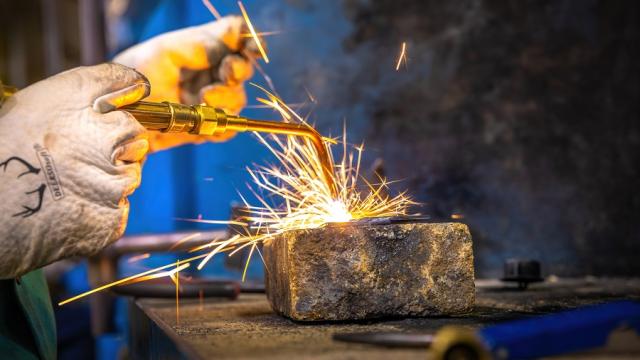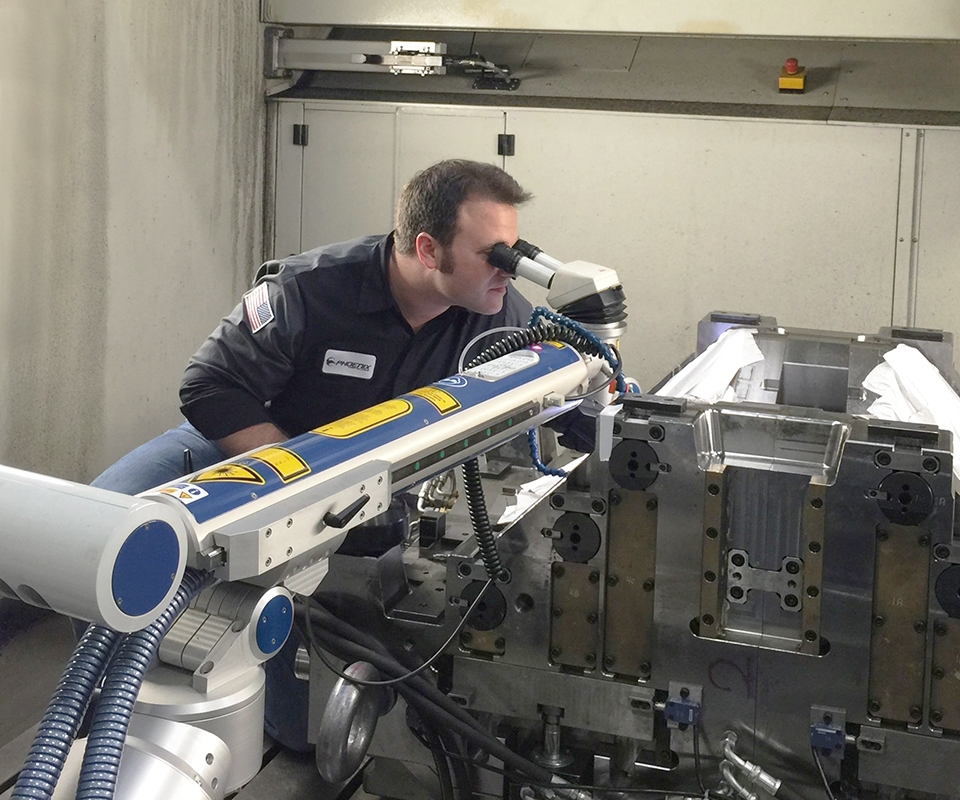Checklist for weld distortion by Belgrade Fabrication
Wiki Article
Typical Welding Repair Issues and Just How to Address Them Effectively
Welding repair work usually run into a variety of issues that can jeopardize the honesty of the end product. Usual problems consist of insufficient infiltration, porosity, and misalignment, among others. Each issue presents special difficulties that require certain techniques for resolution. Recognizing these issues is crucial for welders aiming to boost their end results and abilities. This discussion will discover these typical welding repair work problems and reliable techniques to address them.Poor Infiltration
Insufficient infiltration happens when the weld steel fails to completely fuse with the base product, causing weak joints and possible structural failures. This concern frequently originates from insufficient warmth input, incorrect electrode angle, or inappropriate welding speed. Welders may run into insufficient penetration as a result of a mistake of the necessary criteria for a specific material thickness or type. Furthermore, contamination on the base material's surface area can prevent effective bonding, aggravating the issue. To address poor infiltration, welders ought to assure ideal settings on their equipment and keep a clean job surface. Regular evaluation of welds is suggested to recognize any type of shortages early, permitting prompt adjustments and the prevention of endangered structural stability in bonded settings up.Porosity
Porosity is a common issue in welded joints that shows up as little gas bubbles entraped within the weld metal. This flaw can jeopardize the honesty of the weld, causing lowered toughness and prospective failing under anxiety. Montana Mobile Welding and Repair Belgrade Welding. Porosity usually develops from contamination, moisture, or improper welding methods, which enable gases to leave right into the liquified weld swimming pool. To resolve porosity, welders ought to ensure proper surface area prep work, keep a clean workplace, and use suitable welding parameters. Furthermore, choosing the ideal filler product and securing gas can minimize gas entrapment. Normal inspection and testing of welds can assist identify porosity early, guaranteeing prompt corrective activities are taken, therefore protecting the top quality and integrity of the bonded frameworkMisalignment
Imbalance in welding can arise from numerous aspects, consisting of incorrect arrangement and thermal growth. Understanding the origin is essential for effective resolution. Numerous correction strategies are readily available to straighten elements and guarantee structural integrity.Reasons for Misalignment
Welding imbalance frequently stems from a selection of underlying concerns that can endanger structural integrity. One primary cause is incorrect fit-up of components before welding, which can cause gaps and uneven surfaces. Variants in thermal growth during the welding procedure can also lead to distortion, particularly if the products being joined have various coefficients of growth. Additionally, poor clamping and fixturing may stop working to hold parts safely in position, causing movement throughout welding. Badly maintained devices, including welding equipments and devices, may introduce inconsistencies in the weld grain, further adding to misalignment. Driver error, stemming from inadequate training or experience, can likewise play a substantial role in producing misaligned welds.
Adjustment Methods Offered
Attending to imbalance effectively needs a combination of restorative methods tailored to the certain problems available. One typical technique is the use of components or jigs to hold parts in the appropriate position during welding, making certain consistent alignment. Furthermore, pre-heating the materials can help in reducing distortion and improve fit-up. For substantial misalignment, mechanical realignment techniques, such as using hydraulic jacks or clamps, can be utilized to deal with the setting prior to welding. Post-weld warm treatment may also be needed to relieve stresses triggered by imbalance. Lastly, cautious inspection and change during the configuration phase can prevent misalignment issues from coming to be substantial problems, promoting a smoother welding procedure and enhancing total structural integrity.Distortion
Distortion is an usual challenge in welding that can arise from various factors, consisting of irregular cooling and heating. Understanding the root causes of distortion is crucial for carrying out reliable prevention strategies. Resolving this concern not just boosts structural honesty yet also enhances the general high quality of the weld.Reasons for Distortion
When subjected to the extreme warm of welding, products usually go through modifications that can result in distortion. This phenomenon mostly emerges from thermal growth and contraction throughout the welding procedure. As the weld area warms up, the product broadens; upon cooling, it gets, which can create internal tensions. Additionally, irregular home heating across a workpiece can exacerbate these stress and anxieties, leading to warping or flexing. The kind of product also plays a substantial role; steels with varying thermal conductivity and coefficients of expansion might respond in a different way, resulting in unforeseeable distortions. Inadequate joint design and insufficient fixturing can add to misalignment during welding, enhancing the chance of distortion. Understanding these causes is important for reliable welding fixing and avoidance techniques.Avoidance Techniques
Reliable prevention strategies for distortion during welding concentrate on managing warm input and making sure correct joint design. Maintaining a consistent warmth input assists to lessen thermal expansion and contraction, which can bring about distortion. Making use of methods such as preheating the work surface can also reduce the temperature level slope, advertising uniform heating. Additionally, selecting suitable joint layouts, such as T-joints or lap joints, can enhance security and decrease stress and anxiety focus. Implementing proper fixturing to secure the workpieces in position further help in keeping placement during the welding process. Staggered welding sequences can disperse heat extra uniformly, stopping localized distortion. By using these approaches, welders can greatly decrease the probability of distortion and improve the general top quality of their welds.Splitting
Cracking is a typical problem run into in welding repairs, commonly resulting from numerous factors such as inappropriate cooling prices, product option, or insufficient joint preparation. The incident of splits can greatly jeopardize the honesty of the weld, bring about possible failings throughout procedure. To address this concern, welders should first assess the source, guaranteeing that products work and suitably picked for the details application. In addition, controlling the cooling rate during the welding procedure is crucial; fast cooling can cause stress and cause fracturing. Proper joint layout and prep work additionally add to decreasing the risk. Implementing these methods can improve weld top quality and longevity, inevitably minimizing the chance of splitting in completed weldments.
Incomplete Fusion
A substantial concern in welding repair work is insufficient blend, which takes place when the weld metal does not properly bond with the base product or previous weld passes - Montana Mobile Welding and Repair Belgrade Welding. This defect can this post lead to weak points in the joint, possibly endangering the honesty of the welded structure. Aspects adding to incomplete blend consist of inadequate warmth input, improper welding method, and contamination of the surfaces being joined. To resolve this problem efficiently, welders should assure appropriate pre-weld cleaning and surface area preparation, as well as adjust their welding criteria to attain sufficient infiltration and blend. Regular examination throughout the welding procedure can likewise assist determine insufficient fusion best flux core wire early, permitting prompt restorative steps to boost the overall top quality of the weldOverheating
While welding fixings can boost architectural honesty, overheating offers a substantial obstacle that can lead to material deterioration. Extreme heat throughout welding can modify the mechanical residential properties of metals, causing decreased strength, boosted brittleness, and bending. This sensation is especially essential in high-stress applications where architectural dependability is vital. Identifying overheating can entail aesthetic assessments for discoloration or distortion, in addition to monitoring temperature level throughout the welding procedure. To alleviate the dangers related to overheating, welders ought to employ appropriate techniques, such as regulating warmth input, adjusting traveling rate, and making use of ideal filler products. Additionally, applying pre- and post-weld heat treatments can help restore product buildings and improve the overall quality of the fixing, making sure long-term efficiency and safety.Often Asked Concerns
What Are the Typical Indicators of a Welding Issue?

Just How Can I Check My Welds for High quality?
To evaluate welds for quality, one can utilize visual inspections, ultrasonic screening, and radiographic techniques. Each method guarantees structural honesty, recognizes issues, and validates adherence to defined standards, ultimately boosting the reliability of the welded joints.What Safety Safety Measures Should I Take While Welding?
When welding, one ought to focus on security by wearing ideal personal protective equipment, ensuring correct ventilation, protecting combustible materials away, preserving a clean work area, and knowing environments to stop mishaps and injuries.Can I Fix a Weld Without Redesigning the Entire Joint?
Fixing a weld without redoing the entire joint is possible, relying on the damage (Montana Mobile Welding and Repair Belgrade). Techniques such as grinding, including filler material, or utilizing a welding procedure can effectively attend to particular problems while preserving the bordering structureWhat Equipment Are Vital for Efficient Welding Repairs?
Essential devices for efficient welding repair work consist of a welding device, wire brush, mill, safety equipment, clamps, and filler materials. Each tool plays a vital role in ensuring high quality and safety during the repair work procedure. Porosity normally arises from contamination, wetness, or incorrect welding techniques, which allow gases to leave into the liquified weld swimming pool. Improperly kept devices, including welding makers and devices, may introduce inconsistencies in the weld grain, more contributing to misalignment. When subjected to the intense heat of welding, products typically go through adjustments that can lead to Extra resources distortion. Splitting is a common issue encountered in welding repair services, often resulting from different variables such as inappropriate air conditioning prices, product option, or inadequate joint prep work. A considerable problem in welding fixings is incomplete blend, which happens when the weld metal does not adequately bond with the base material or previous weld passes.Report this wiki page